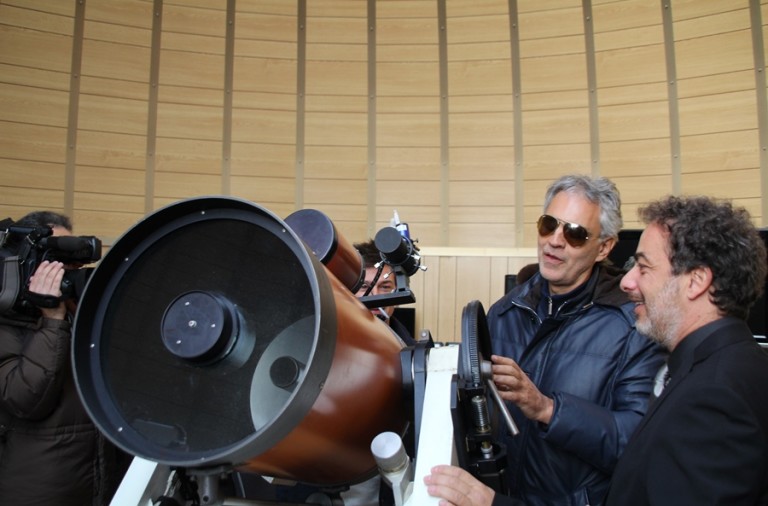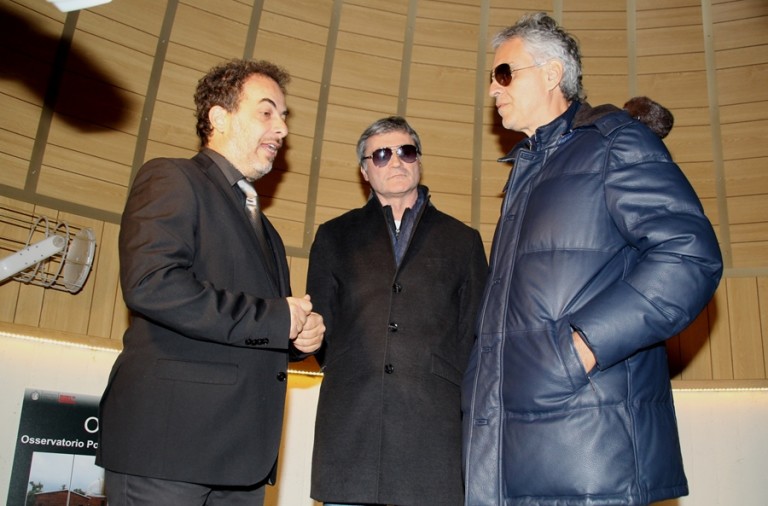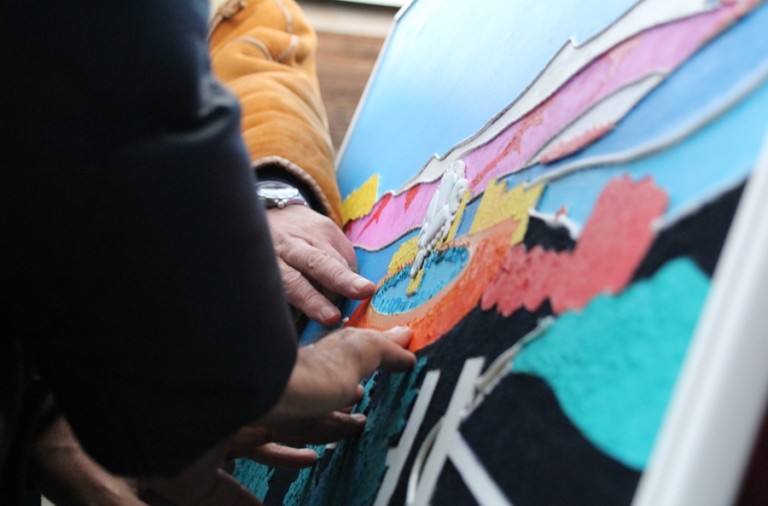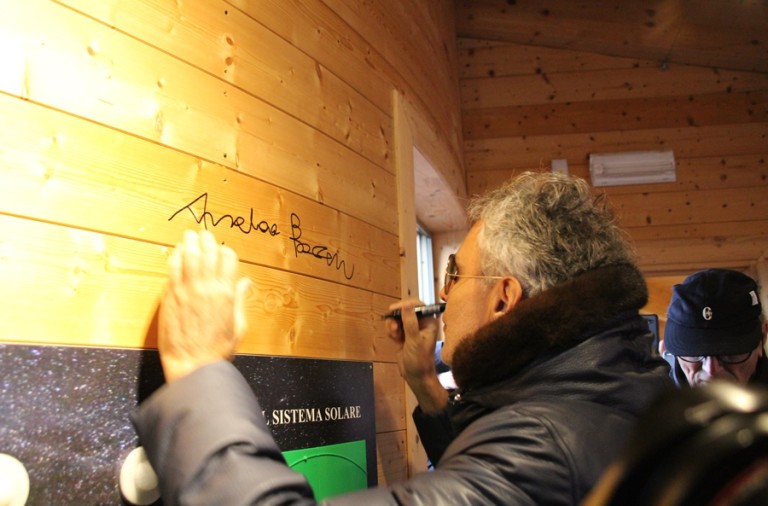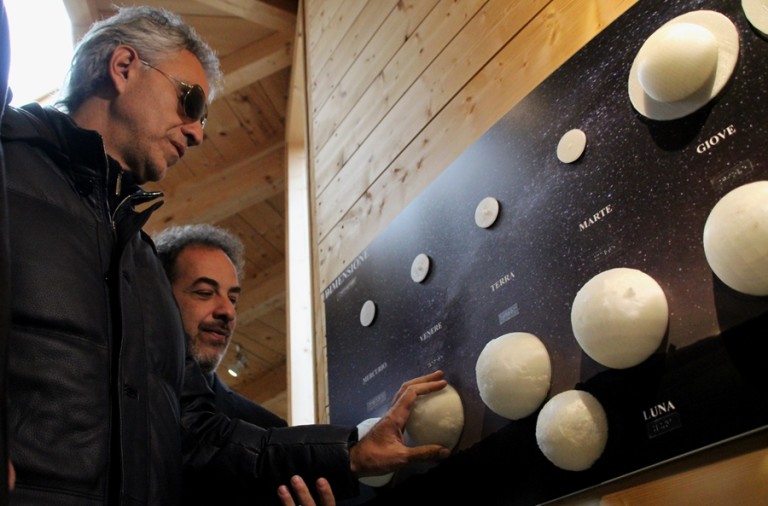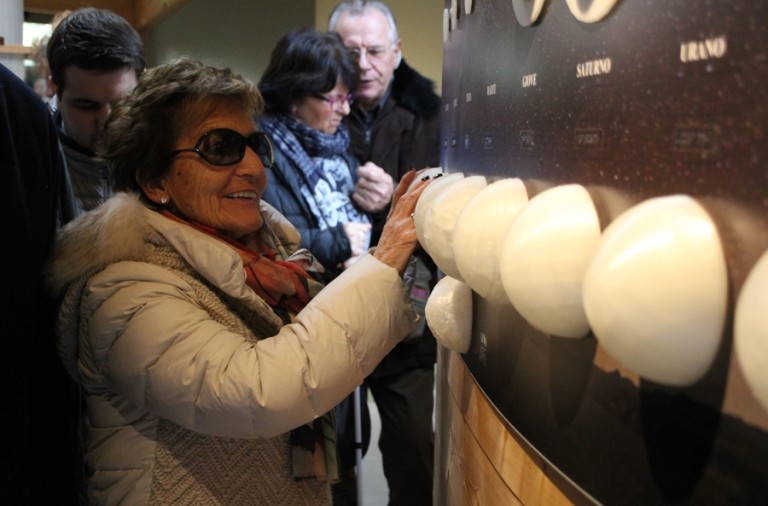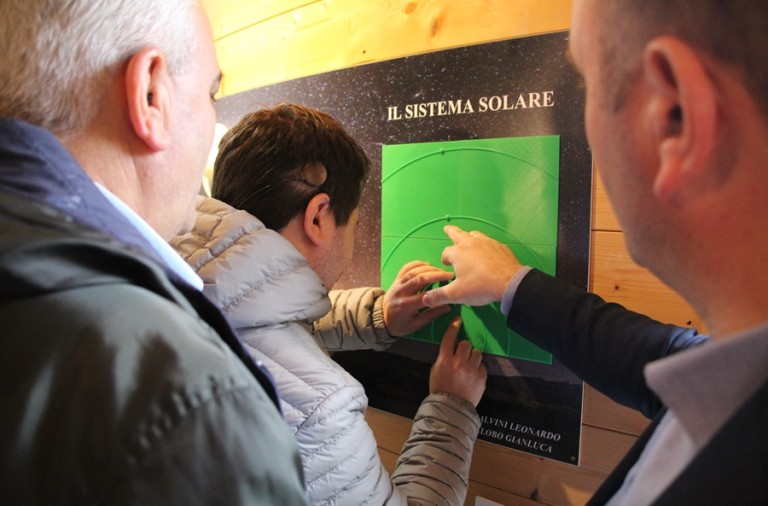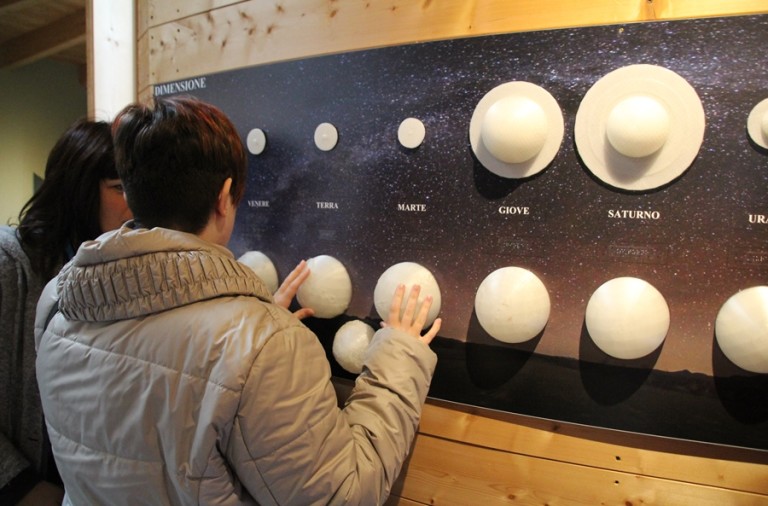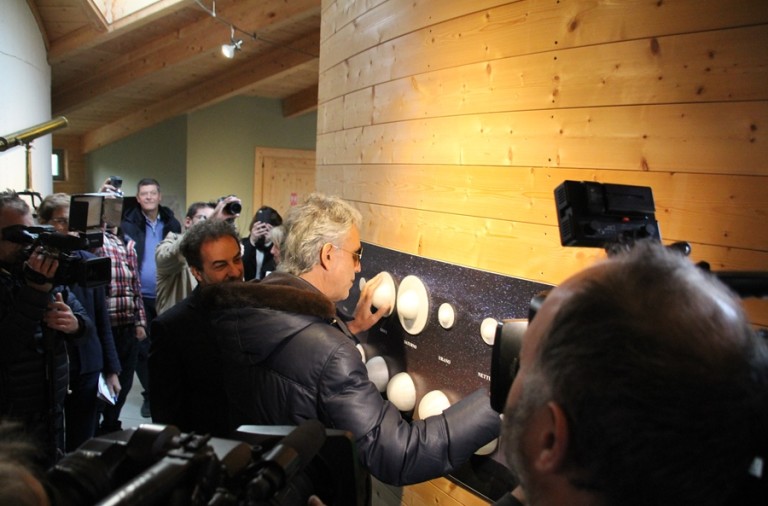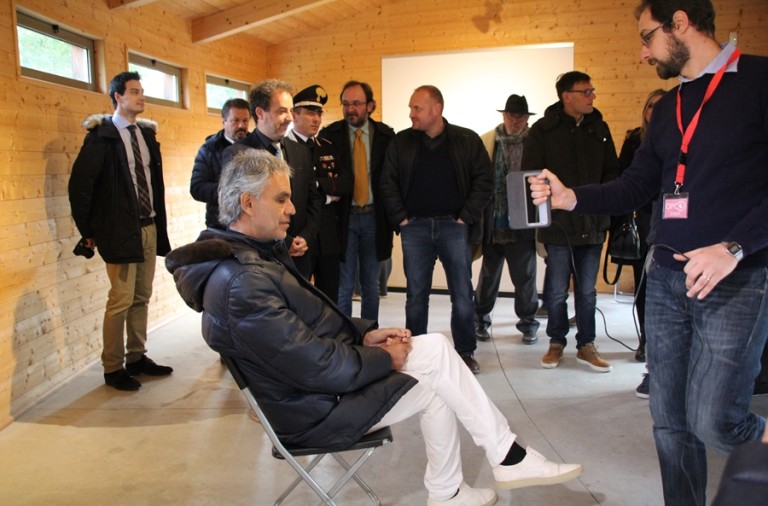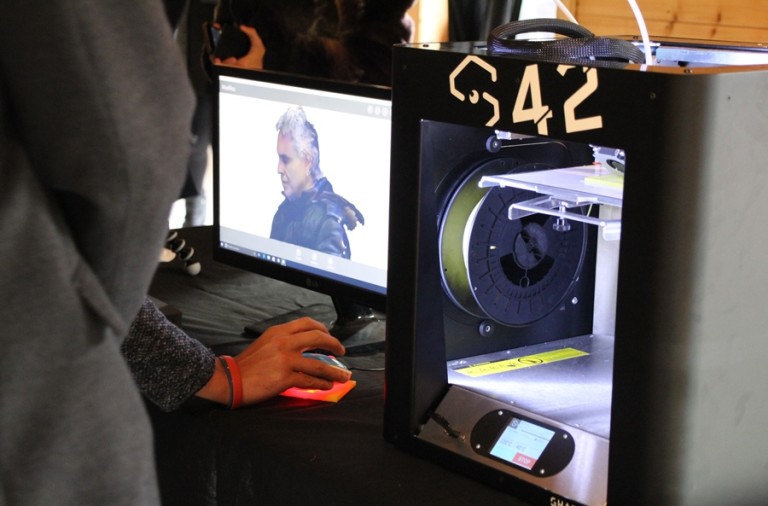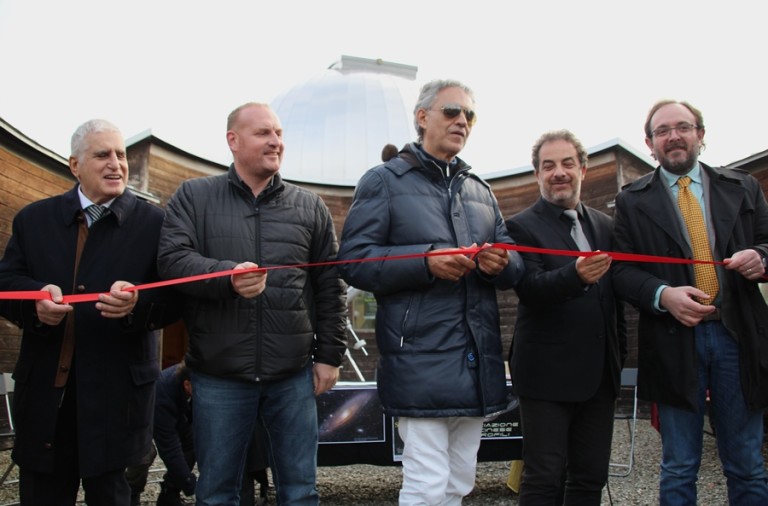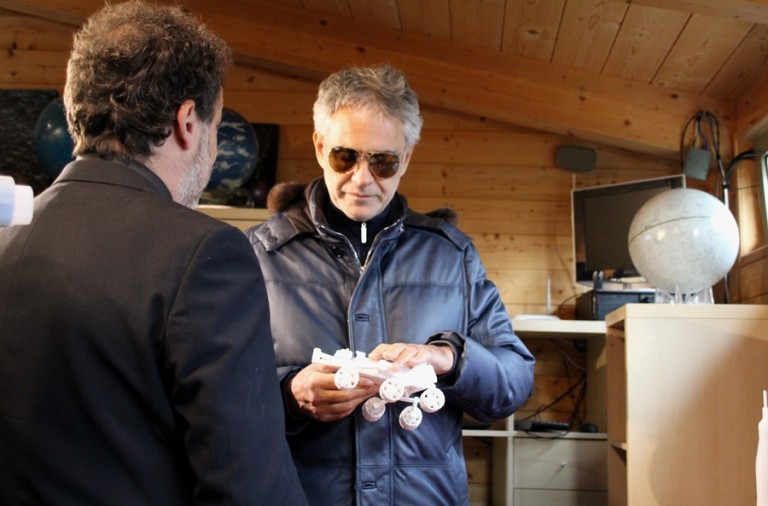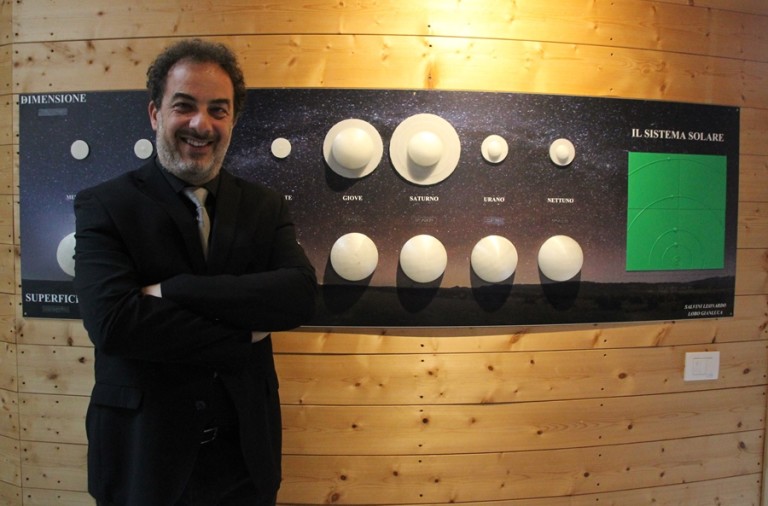Articolo disponibile anche in: Italian
The sky enters the room to make you feel like part of the universe and the solar system; open and capable of removing every barrier. The solitude that the non-seeing attribute to the absence of light defeats the dark and listens to the music of the planets.
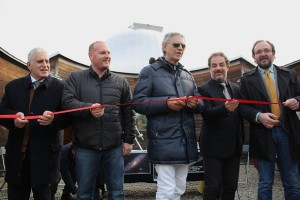 On Sunday November 13, the dome of the Poly-functional Observatory of Chianti, and the astronomer, Emanuele Pace, opened another door to the disabled and offered a new experience to non-seeing visitors.
On Sunday November 13, the dome of the Poly-functional Observatory of Chianti, and the astronomer, Emanuele Pace, opened another door to the disabled and offered a new experience to non-seeing visitors.
The world renowned tenor, Andrea Bocelli discovered it first, guest of honor of the towns of Barberino Val d’Elsa and Tavarnelle, among the hills of Montecorboli, where the inauguration of the Itinerary of astronomy for the non-seeing took place.
The dome opens up and the telescope aimed at Jupiter surprises with sound detected through a spatial probe elaborated by the scientists of NASA. It is a sound never heard before, acute and low at the same time, pulsating and waving intermittently in an overwhelming vortex.
“This is the music of culture, without boundaries,” said Andrea Bocelli. “It is an excellent operation proposed by the Observatory and the Town Union which makes astronomy that the non-seeing have dreamed about accessible. Imagining the sky, they are impassioned about the life of the stars. I was impressed by the tactile bodies and reproductions of the planets in this itinerary which allow one to know the dimensions of celestial bodies and the distance between them. We can see how small we inhabitants of the Earth are in respect to the size of the universe. The symphony of the solar system is extraordinary and brings us back to the living symbols of the birth of the world”.
The tenor’s experience was repeated for Mars, Saturn, Venus, the Moon and the Earth, and listened to by several groups of non-seeing. The event was coordinated by Antonio Quatraro from theTuscan branch of the Union of Blind Italians.
“The observatory”, comment mayors Giacomo Trentanovi and David Baroncelli, “was born as a public structure, as the home for the culture of astronomy and the spreading of science as well. It is tied to the town of Barberino val d’Elsa and Tavarnelle which strongly believed in this investment and put aside an amount equal to €400,000 today. The observatory is now enriched with another treasure, astronomy accessible to the disabled, a sensorial experienc which defies every physical and social barrier. The non-seeing become active protagonists in the path of knowledge and deepening which was brought about by the passion of a team of astronomers, experts, and hundreds of volunteer citizens from the Chianti area”.
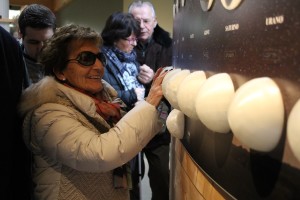 “After a journey lasting three years, the project came alive,” says Emanuele Pace, together with Gianni Paoli and Brigida Cirillo. “The project, ‘Stars beyond the dark’, aimed at making science more available to the non-seeing, foresaw the realization of tactile structures and 3-D planets, and alters the ability to listen to sounds emitting from the planets through direct access to the data Bank of NASA. The project was created by the Italian Union of the Blind and by the Ludica Association and financed by the program,Pianeta Galileo of the regional Council of Tuscany, by Cesvot and its projects of innovation and formation training and by the Lions Club Barberino, Montelibertas”.
“After a journey lasting three years, the project came alive,” says Emanuele Pace, together with Gianni Paoli and Brigida Cirillo. “The project, ‘Stars beyond the dark’, aimed at making science more available to the non-seeing, foresaw the realization of tactile structures and 3-D planets, and alters the ability to listen to sounds emitting from the planets through direct access to the data Bank of NASA. The project was created by the Italian Union of the Blind and by the Ludica Association and financed by the program,Pianeta Galileo of the regional Council of Tuscany, by Cesvot and its projects of innovation and formation training and by the Lions Club Barberino, Montelibertas”.
“The modern techniques of three-dimensional printing, provided by the Paleoss Society, were utilized together with models published by NASA and the work of NASA astrophysicists which enable the conversion from radio signals from the planets into sounds. Signals from the sun and other objects of the universe were also recorded by space probes”.
Thanks to the contribution by Cesvot, the initiative also provided training for volunteers which gave them the possibility to transmit scientific concepts to the non-seeing. For the inauguration, other objects and tactile panels with 3-D structures created by Paleos, and contributed by the Astrofili Cascinesi and the Ego Consortium, which manages the Virgo experiment on
gravitational waves at Cascina were utilized.
A work of art created by the artists Leopoldo Terreni and Domenico Antonacci was also presented.
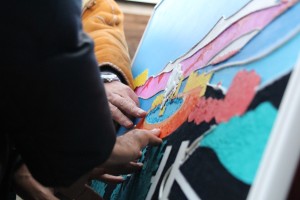
After Margherita Hack, “godmother” in 2010, and the astronaut, Paolo Nespoli, who inaugurated one of the sections of the observatory, Andrea Bocelli also left his mark within the observatory.
His autograph is now on the wooden firmament of the dome, and shortly the 3D printer will produce a three dimensional bust of the tenor in name of the stars.
